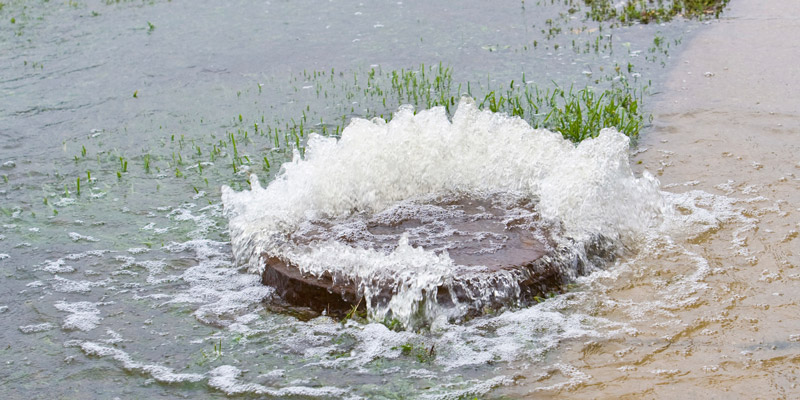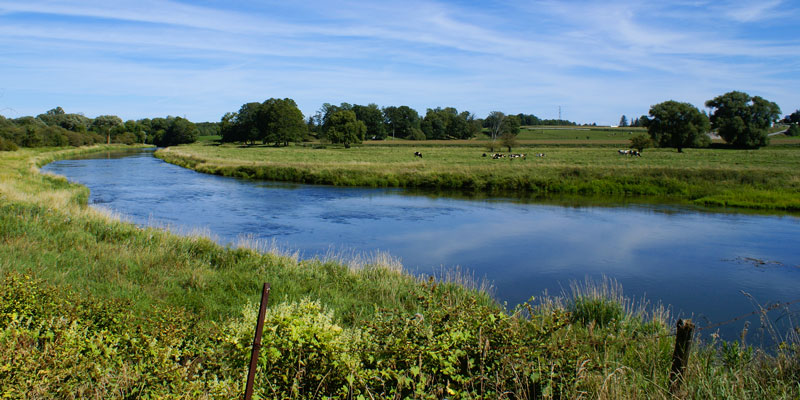Incenting Green Infrastructure for Storm Water Management: Knowledge Mobilization for Canadian Communities
Nathalie Chalifour, Associate Professor, Faculty of Law and Sustainable Prosperity Research Network, University of Ottawa (2016-2017)

Challenge
An increasingly urbanized population has led to more impervious surfaces, causing higher volumes of water to flow through urban areas, picking up various non-point source contaminants from land use activities and transportation. This stormwater runoff that now spills into urban waterways is a leading contributor of toxic chemicals and fecal contaminants entering waterways (McGuire et. al., 2010; US EPA, 2002). Traditional stormwater management systems are not only inadequate when it comes to coping with this urban water pollution but they also cannot handle more frequent extreme flood events and increased rainfall occurring in a changing climate (Schreier, 2014). Municipalities are responsible for providing stormwater services and adapting to these changing requirements in a financially sustainable manner, but they often do not have sufficient resources or capacity. This has generated growing ecological, risk management, and economic challenges in our urban settings.
Green infrastructure (GI) has been advanced as an innovative, complementary strategy to reduce pressure on stormwater systems and secure cleaner run-off to water bodies. GI replaces the traditional stormwater management paradigm, one of rapid drainage and removal of water from urban areas, with a natural hydrological paradigm focused on enhancing the capacity of urban landscapes to filter, absorb, store, and infiltrate rainwater.
Local governments already face a $31 billion infrastructure deficit for water and wastewater/stormwater systems (Mirza, 2007), and are adopting new infrastructure asset management practices that are disclosing the full extent of underfunding of municipal infrastructure. Many municipalities are searching for alternative funding models to meet these infrastructure asset management obligations and new infrastructure needs.
Project
The project was delivered in partnership with Green Communities Canada (GCC) and The Natural Step (TNS), under the overall coordination from Sustainable Prosperity (SP). The Sustainable Prosperity partnership builds on the rationale, methods and techniques for GI, to explore the policy tools that municipalities can use to increase its adoption. Drawing on research synthesized in Phase I of the larger partnership, in this phase (Phase II), the project team focused on mobilizing knowledge on the applicability, rationale and design of stormwater user fees and other incentives for GI. Specific focus was placed on determining which policy tools are best suited to private property owners, along with determining the role and design of other financial incentive tools such as grants, rebates, financing and property tax or development charge incentives, which may also be implemented, either on their own, or as complementary policies to the stormwater user fees.
The objective of the overall project was to increase the resiliency of cities and moderate the impacts of urban run-off and extreme storm events through increased use of GI and to see more Canadian municipalities support the adoption of GI on private lands through “user pay” models and other incentives. This approach will also reduce demand for grey stormwater infrastructure and generate a dedicated source of funds for its maintenance, renewal and expansion.
Outputs
- A promotional flyer and the production of two reports researched and written in Phase I of the project: i) Storm water user fees: putting urban storm water management on an ecological and financial sustainable footing; and ii) Grants, rebates, financing and incentives for natural urban storm water management: best practices.
- A dedicated micro-site featuring these reports and other related resources.
- A podcast summarizing the research findings.
- Op-eds for placement in local media, and articles for sectoral publications such as Municipal World.
- Social media infographic postcards.
- A national webinar and community-based workshops, as well as targeted briefings in select communities.
- Briefings for interested councilors and municipal staff.
Outcomes
- Increased understanding of green infrastructure benefits
- Changes in behaviour for private property owners
- Expansion of green infrastructure implementation in municipalities across Canada
- Changes in practice and policy in relation to stormwater management
- Informed and supportive constituencies for municipal action




